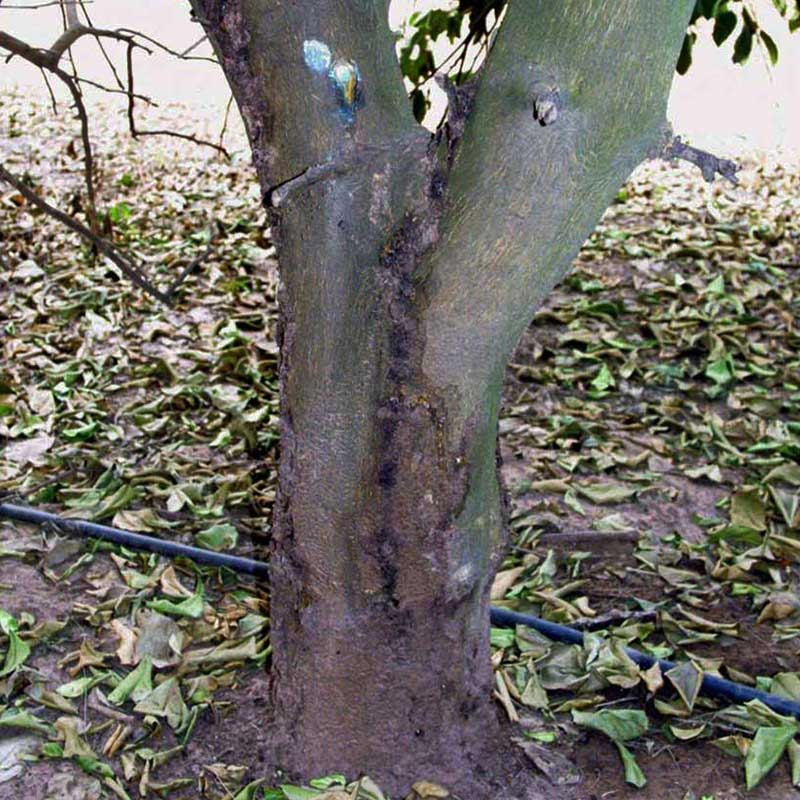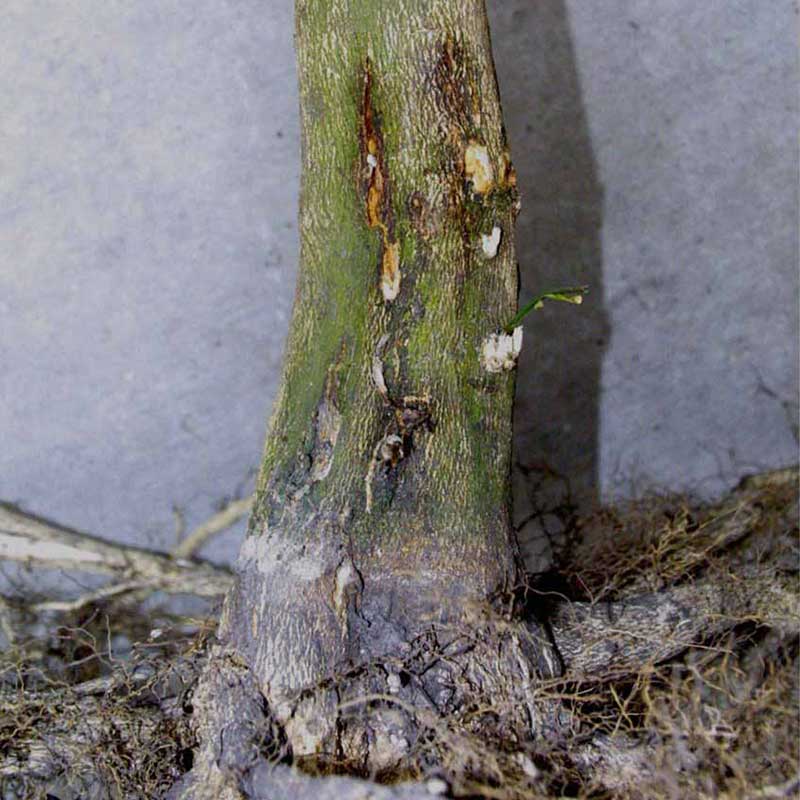



Collar rot is caused by the fungal pathogen Phytophthora citrophthora, which thrives in damp conditions where organic matter on the soil surface is allowed to contact the trunk.
Plant Part: Trunk, leaves and branches
Season: Autumn - Winter
Symptoms: The first symptoms are leaves starting to turn yellow and patches of gum oozing out from the bark around the base of the trunk. The affected bark becomes wet and soft. If it dries out, splitting can then occur. If the organic matter is not cleared from around the base of the trunk the rot will continue to spread until the tree is ringbarked. Collar rot is especially prevalent in clay soils.
Control: Make sure you have good water drainage as Citrus Fruit Salad Trees don't like wet feet for this very reason. Check out our Planting Out Guide and Information found in the Care Instructions that are sent with your Fruit Salad Tree.
Prevention: Planting - If you are not sure about how well your soil drains, plant your tree on top of the ground, and mound soil up around your tree. This will prevent any water logging from occurring in clay or poorly draining soils.
To prevent collar rot, improve the air circulation near the trunk by keeping it clear of organic matter. Avoid wetting the trunk when watering, and improve soil drainage around the dripzone of the tree. Avoid injuries to the lower trunk and ensure the bud union is well above soil level. Don't over water your Fruit Salad Tree as this fungus grows well in damp conditions.
Registered copper fungicides can be applied in autumn as a skirt or under-tree spray. The chemical phosphorous acid applied as a foliar spray will provide protection from Phytophthora infection.
Affected trees should have the lesions cut away into healthy tissue with a sterilised sharp knife. Re-sterilise the blade with methylated spirits between cuts, before treating the wood under the cuts with a copper fungicide.
References: Department of Agriculture & Food, Western Australia, Department of Primary Industries NSW, QLD Department of Agriculture, Fisheries & Forestry ,William M. Brown Jr., Bugwood.org, idtools, Houzz, Permies - Angelika Maier, Citrus Plant Protection Guide 2020, and the FST team.
Subscribe to our Care Reminder Newsletter for growing tips, care advice and current specials!
Welcome to Fruit Salad Trees!

We will send you all the tree care advice you need to grow different fruits on one tree and keep the whole household happy!
